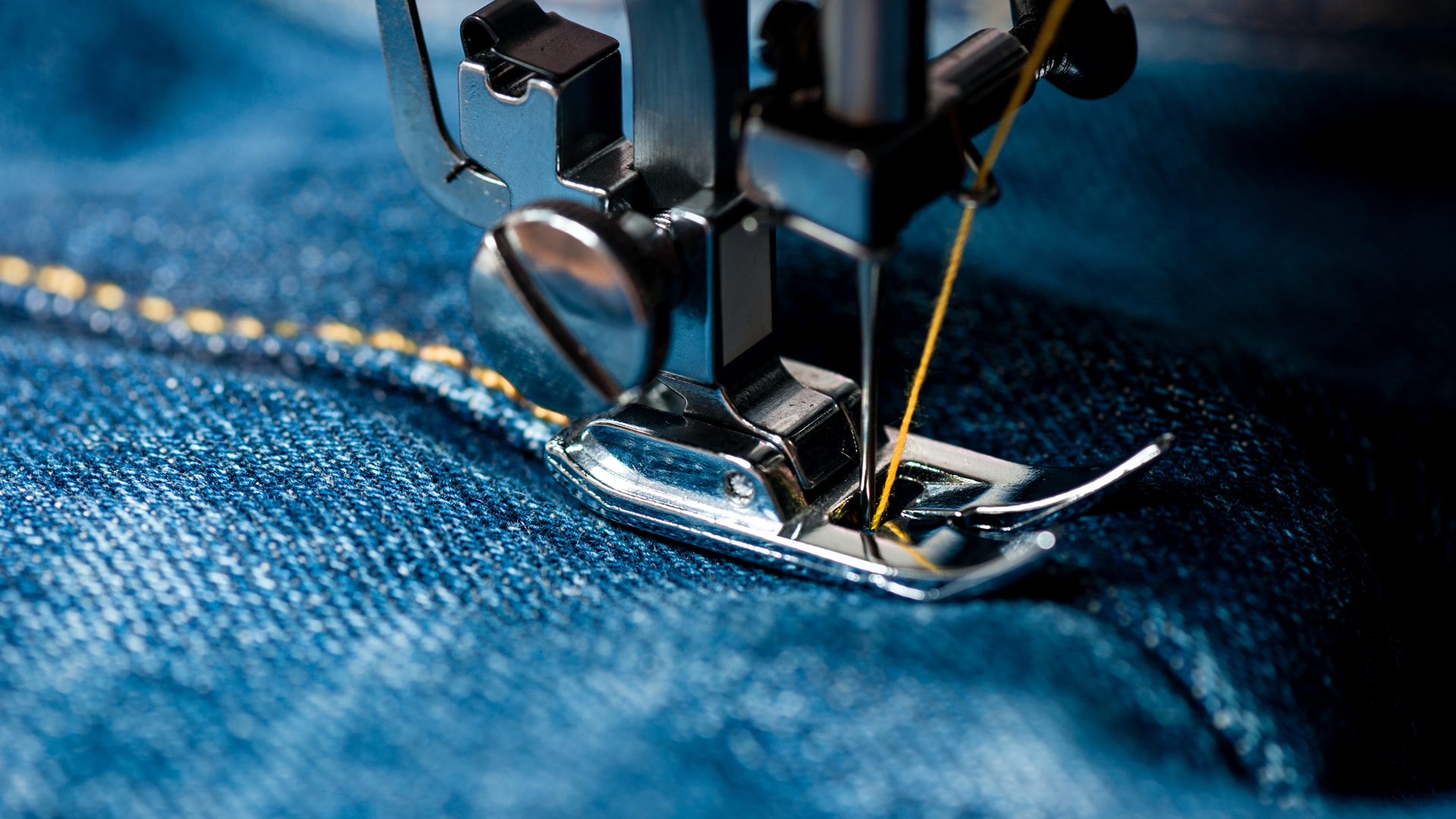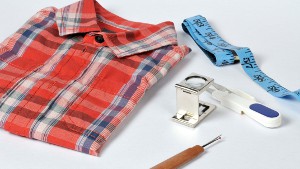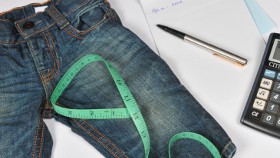
Thread Consumption Guide
Contents
Measuring actual thread consumed
Using thread consumption ratios
Coats Seamworks (Thread Calculator)
Thread Consumption Methods
In today’s competitive marketplace, there is a need for tight cost control. A realistic estimation of potential thread requirements for particular garment styles or contracts will not only end up saving you money, but also enable you to use a superior thread for the same cost, thereby not compromising on garment quality.
Several factors determine the extent of thread consumption in any sewn product, such as stitch type, seam type, material thickness, number of layers, construction and SPI (stitches per inch).
However, these factors are not constant with the different style preferences. Hence, thread consumption is never standard for sewn product categories such as shirts, trousers and footwear.
There are two methods generally used to calculate the amount of thread in a seam and hence the thread consumption in the sewn product:
- By measuring the actual amount of thread consumed
- By calculation using thread consumption ratios

1. Measuring Actual Thread Consumed
A specified length of a given seam is measured and then the thread is pulled out of this length. We can use the amount pulled out of this specified length to calculate the ratio of thread consumed in the entire seam. By dividing the amount of thread by the seam length, we get the ratio of thread consumed. If we multiply this factor times the total length of seam, we can determine the total thread consumed for that seam.
Example:
Length of seam = 100 cm (1 metre)
Stitch class 401 = 2-Thread Chain stitch
Length of seam for which thread is removed = 15 cm
Needle thread removed = 19.5 cm
Needle thread factor = 19.5/15 = 1.3
Looper thread removed = 62.0 cm
Looper thread factor = 62.0/15 = 4.1
Total Needle thread = 100 cm x 1.3 = 130 cm
Total Looper thread = 100 cm x 4.1 = 410 cm
Total thread consumed = 130 + 410 = 540 cm
Add 15% wastage* = 540 cm x 1.15 = 621 cm
*Generally, 10% to 15% wastage of thread is added to the consumption derived. This wastage occurs due to shop-floor conditions like machine running, thread breakage, repairs, etc. The above example shows the total thread consumed for one type of stitch class in a garment. By following a similar procedure, you can calculate the thread consumed for different stitching operations in a garment.
2. Thread Consumption Ratios
The easier method is to use the generally applicable Thread Consumption Ratios for the various stitch types that are listed in the table below. By relating these ratios to the length of seams using each stitch type, total thread consumption can be calculated.
| Stitch Class | Description | Total Thread Usage (cm per cm of seam) / Thread Ratio | No. of Needles | Needle Thread % | Looper / Under (incl. Cover) Threads % |
|---|---|---|---|---|---|
| 301 | Lockstitch | 2.5 | 1 | 50 | 50 |
| 101 | Chainstitch | 4.0 | 1 | 100 | 0 |
| 401 | Two Thread Chain Stitch | 5.5 | 1 | 25 | 75 |
| 304 | Zigzag Lockstitch | 7.0 | 1 | 50 | 50 |
| 503 | Two Thread Overedge Stitch | 12.0 | 1 | 55 | 45 |
| 504 | Three Thread Overedge Stitch | 14.0 | 1 | 20 | 80 |
| 512 | Four Thread Mock Safety Stitch | 18.0 | 2 | 25 | 75 |
| 516 | Five Thread Safety Stitch | 20.0 | 2 | 20 | 80 |
| 406 | Three Thread Covering Stitch | 18.0 | 2 | 30 | 70 |
| 602 | Four Thread Covering Stitch | 25.0 | 2 | 20 | 80 |
| 605 | Five Thread Covering Stitch | 28.0 | 3 | 30 | 70 |
Note:
- The above ratios are arrived at with a stitch density of 7 stitches per cm (18 stitches per inch).
- These ratios are the prescribed minimum in regular conditions and marginally vary with the factors affecting thread consumption.
- A certain percentage of wastage is to be added to the above ratios as per shop floor conditions. It may vary from 10% to 15%.
Example:
Length of seam = 100 cm (1 metre)
Stitch class 401 = 2-Thread Chainstitch
From the table, total thread usage per cm of seam = 5.5 cm
Total thread consumption = 100 cm x 5.5 = 550 cm
Estimated Needle thread = 550 x 0.25 = 138 cm
Estimated Looper thread = 550 x 0.75 = 412 cm
Add 15% wastage = 550 cm x 1.15 = 633 cm of thread per seam

By applying thread consumption ratios in a manner similar to the calculation in the above example, a sample consumption working for an average sized knitted t-shirt is shown in the table below.
Example
Thread consumption for an average-sized knitted t-shirt
| Stitch | Type | Seam Length (m) | Thread Ratio | Total Thread Consumption (m) | NT | LT |
|---|---|---|---|---|---|---|
| 301 | Lockstitch | 4.0 | 2.5 | 10.0 | 5.0 | 5.0 |
| 504 | Three Thread Overedge Stitch | 3.0 | 14.0 | 42.0 | 8.5 | 33.6 |
| 401 | Two Thread Chain Stitch | 0.75 | 5.5 | 4.0 | 1.0 | 3.0 |
| 503 | Two Thread Overedge Stitch | 0.95 | 12.0 | 11.4 | 6.3 | 5.1 |
| 101 | One Thread Chain Stitch | 0.10 | 4.0 | 0.4 | 0.4 | 0.0 |
| Total thread consumed | 67.8 | 21.1 | 46.7 | |||
| Wastage (15%) | 10.0 | 3.0 | 7.0 | |||
| Total after considering wastage | 77.8 | 24.1 | 53.7 | |||
These days, thread consumption and costing can be calculated without the need to pick the thread from seams. Coats' Seamworks is a sewing management software solution that can accurately calculate thread consumption and costing for a single sewn product or production run or any number of sewing machines. Seamworks helps to reduce thread wastage and can give you a competitive edge through cost effective sewing thread procurement. Ask your local Coats contact about Seamworks.
Note: Stitch density, stitch / seam chioce, variations in style, fabric thickness and number of plies are factors that can affect thread consumption. It is also necessary to make provision for possible thread wastage (usually 15%) while calculating thread consumption.
Average Thread Consumption
The table below gives the average thread lengths consumed for different types of garments, drawn from our experience. These figures include 5% wastage allowance:
| Item | Consumption (m) | Item | Consumption (m) |
|---|---|---|---|
| Anoraks | 210 | Pantie girdle | 35 |
| Aprons | 20 | Pantie hose | 30 |
| Blouses | 100 | Raincoats | 285 |
| Boiler suit (Chain stitch)
Ladies (pair) Men (pair) |
420
30 35 |
Shirts
Men Boys |
-
120 75 |
| Bras | 45 | Skirts | 100 |
| Briefs
Children Ladies / Men |
-
35 70 |
Shorts
Children Sports |
-
35 70 |
| Caps
Children Men |
-
75 90 |
Slacks
Ladies Children |
-
160 130 |
| Corsets | 95 | Swimwear: Ladies | 75 |
| Dresses
Children Ladies |
-
90 195 |
Suits
Ladies Men - 2 piece |
-
365 480 |
| Dressing gowns
Children Men |
-
165 250 |
Ties | 7 |
| Handkerchiefs | 5 | Track suits | 160 |
| Housecoats | 185 | Trousers: Men | 270 |
| Jackets: Men | 200 | T-shirts | 100 |
| Jeans: Men | 210 | Under pants | 50 |
| Nightdresses
Children Ladies |
-
55 100 |
Under slips
Full length Waist |
-
75
|
| T-shirts (basic) / Vests | 50 | Waistcoats | 50 |
Coats SeamWorks
Apart from the two regular methods that are used, there is a quick, simple and efficient option available to our customers called Coats SeamWorks. Coats SeamWorks is a sewing management software solution that can calculate thread consumption for any sewn product.
We have recently launched our new online application Coats SeamWorks Cloud, developed by our software group, Coats Digital. Coats SeamWorks Cloud delivers helpful new features and will ensure that you benefit from the latest updates, without you needing to do anything. It can be accessed via any browser from any device giving you the flexibility of accessing anywhere, anytime.
Using this software, it is possible to calculate thread consumption metering and costing without having to pick up the thread from the seam. Not only does it calculate the consumption for a single product, it also enables you to choose the right thread ordering pattern, which is necessary for optimal usage of the ordered thread in the shop floor.

Features and Benefits
- Easy-to-use interface
- Support for metric and imperial measurement systems
- Increased data integrity
- Enhanced calculation engine
- Multi-lingual support
- Automatic feature updates as they are released
- Connectivity with other applications (e.g. GSDCost)
- Portable browser-based access
- Excel upload function
- Remote cost file management
- Secure access through Single Sign On
- Cloud storage
- Remote setup, training, maintenance, and troubleshooting
Coats Technical Services
Sewing engineers at Coats can help you with precise metering of the actual thread consumption for your garments. They can provide valuable information for design, cost accounting, inventory planning and logistics.

